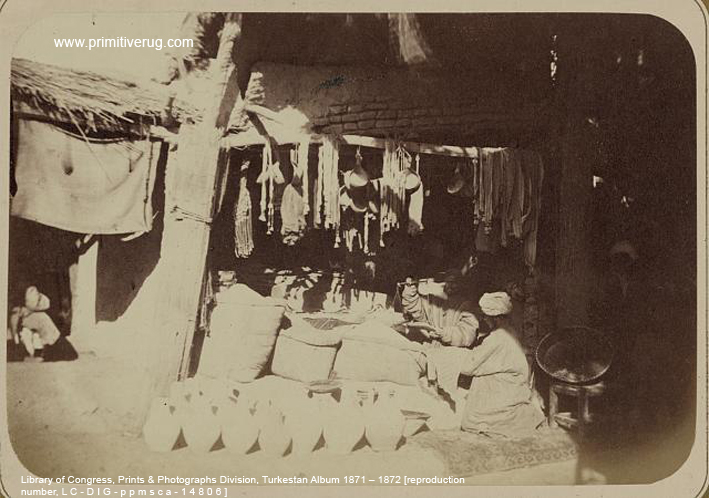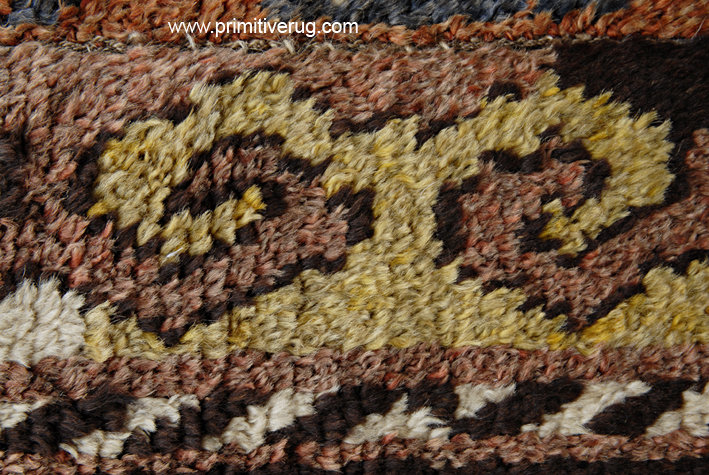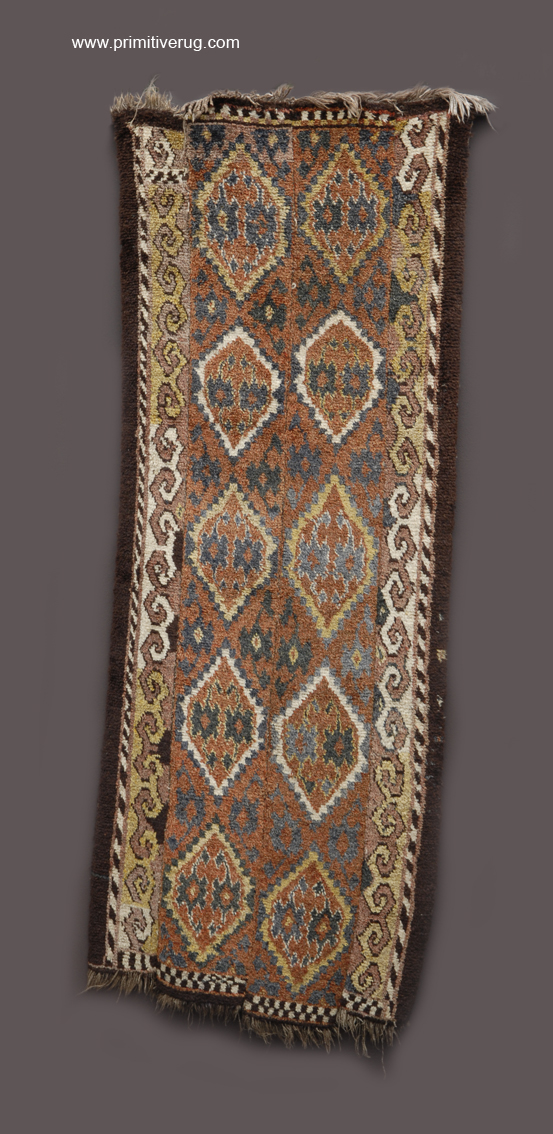Rams Horn Motif Uzbek Julkhirs Samarkand Circa 1870
Merchant seated on Uzbek Julkhirs Circa 1870 Samarkand
“Bakkal” Samarkand from the Turkestan Album 1871 – 1872. This Julkhirs Bearskin rug dates from about 1870. The merchant is seated on the Julkhirs which has a Rams Horn motif as a main border. The rams horn motif was popular as a border on Julkhirs. In this merchants store we see carefully laid out items and the Julkhirs plays an important role in the merchant’s life. There are many images of people in Samarkand with less fortunate circumstances than this merchant, many seated on rags rather than rugs. Purchasing a Julkhirs at the markets in Samarkand would have required access to more cash than some had at their disposal.
The rams horn motif illustrated in the colour images are of a similar julkhirs rug. The rams horn motifs on the border of both rugs is identical, woven by semi nomadic Uzbeks on a narrow beam loom, near Samarkand and traded in the Samarkand market. The rams horn motif or "Kuchkorak" is an ancient motif, found on many textiles including leather cutouts and felts from the Pazyryk burials of the Iron Age Scythian Horsemen.1 Petroglyphs carved out of rock by Stone Age and Bronze age inhabitants of the region reveal the use of the Rams Horn as a motif. "Prehistoric art in Central Asia is the so-called ‘animal style’, which was connected with the early Iranian nomads described by the Greeks as Scythians and the Persians as Sakas. The distinct characteristics of the animal style were applied in various media, like wood or metal objects (especially gold), as well as in rock art."2 The Zoomorphic representation of rams horns as a motif was widespread amongst many Central Asian people and rendered in recent weavings in the same archaic style as the rams horns of the Scythians.
IMAGES
1 Library of Congress, Prints & Photographs Division, Turkestan Album 1871 – 1872 Melochnaia torgovlia. Melochnaia lavka (bakkal') [reproduction
number, LC-DIG-ppmsca-14806] digital file from original photo.
Notes: “Bakkal” translated from Arabic means “store”, original print ALBUMEN.
Illus. In: Turkestanskii al’bom, chast’ etnograficheskaia…, 1871-1872.
REFERENCES
1. Rudenko, Sergei I. Frozen tombs of Siberia: The Payzryk Burials of Iron Age Horsemen Berkley and Los Angeles University Press, 1970.
2. Rozwadowski , A. The forgotten art of ancient Uzbekistan p.2



